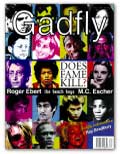 At the time of his death from cancer ten years ago Raymond Carver, 50, was the most admired and imitated short story writer in the country. As a stylist, Carver was credited with founding the movement known as minimalism and commercially he was responsible for bringing about the short story renaissance of the 80s. Like in the songs of Bruce Springsteen, Carver’s frequently unemployed characters marry too young, drink too much and find their children a burden. Carver’s pared down prose dispenses with setting, description and planted imagery. “If the first draft of the story is forty pages long,” Carver said in an interview with The Paris Review, “it’ll usually be half by the time I’m finished with it.” His sentences have the direct cadence of speech rather than the sound of artfully crafted and nuanced compositions. Much is done through Carver’s use of dialogue, which like in actual speech is repetitive and often unrevealing. To other writers it was deceptively easy to employ his techniques, and a generation of writers educated in Masters of Fine Arts programs like the Iowa Writers Workshop began to fill literary journals and book shops with mass-produced Carver-style stories of blue collar angst and middle class ennui.
At the time of his death from cancer ten years ago Raymond Carver, 50, was the most admired and imitated short story writer in the country. As a stylist, Carver was credited with founding the movement known as minimalism and commercially he was responsible for bringing about the short story renaissance of the 80s. Like in the songs of Bruce Springsteen, Carver’s frequently unemployed characters marry too young, drink too much and find their children a burden. Carver’s pared down prose dispenses with setting, description and planted imagery. “If the first draft of the story is forty pages long,” Carver said in an interview with The Paris Review, “it’ll usually be half by the time I’m finished with it.” His sentences have the direct cadence of speech rather than the sound of artfully crafted and nuanced compositions. Much is done through Carver’s use of dialogue, which like in actual speech is repetitive and often unrevealing. To other writers it was deceptively easy to employ his techniques, and a generation of writers educated in Masters of Fine Arts programs like the Iowa Writers Workshop began to fill literary journals and book shops with mass-produced Carver-style stories of blue collar angst and middle class ennui.
One of Carver’s own editors, Gordon Lish, argued that anyone could now be a great writer. “I see the notion of talent as quite irrelevant,” Lish said in an interview with Alexander Neubauer. Lish offered expensive private classes to students arguing that “[m]y notion is that anyone who speaks, by reason of that speech, has prospects of achieving important imaginative writing.” Of course, what Lish fails to realize is that not all speakers are worth hearing: a fact obvious to anyone who has been caught sitting next to the wrong person on a bus.
First published in 1976, Will You Please Be Quiet, Please, Carver’s debut collection of stories, establishes his distinctive approach to the short story form. On the surface little of significance happens in these stories: a waitress serves an overweight man in a restaurant, a couple go visit friends to smoke pot, a mailman tells what he knows of the turbulent relationship of a couple on his route. “One big mistake that almost all writers make when they start out writing is not being honest in the way they use words,” Carver said in an interview with Hansmaarten Tromp. “They use words that they’ve heard but that don’t fit the story material.” In fact, what makes Carver’s writing so distinctive is not only his ability to find a language suited to his often stilted characters but also the consistency with which he manages to maintain an artful momentum for the reader. The story “Fat” opens: “I am sitting over coffee and cigarets at my friend Rita’s and I am telling her about it. Here is what I tell her.”
The intimate tone that Carver has mastered is an illusion which has been carefully crafted. While writing these early stories, Raymond Carver was an obsessive reviser. “I’ve done as many as twenty or thirty drafts of a story,” Carver told The Paris Review. “Never less than ten or twelve drafts.” Unlike fiction, life always moves forward and perhaps it was the chaos, mistakes and misfortunes of Carver’s life that made him such a tenacious rewriter.



Hi, this is a comment.
To delete a comment, just log in and view the post's comments. There you will have the option to edit or delete them.